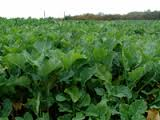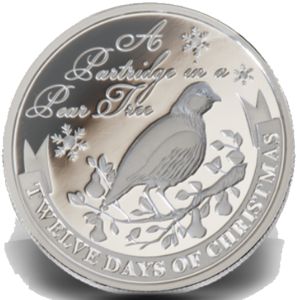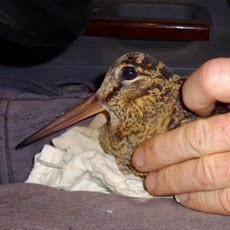Pollination is the process of helping plants reproduce. It is the transfer of pollen between the anthers (male pollen – bearing structures) and the stigma (female, pollen – catching structures) allowing plants to fertilize and set seed. Although some species such as grasses use the wind to distribute their pollen the majority of the flowering plant species benefit from the interactions with insect pollinators. A wide range of insects visit flowers to collect food in the form of nectar or pollen. The most important pollinators in Ireland are insects particularly bees, hoverflies, butterflies, moths and many other fly species.
Why is pollination important?
According to the Sunday Times in September 2014 the annual economic value of bees pollination worldwide is valued at € 268bn. In Ireland, crops such as apples, strawberries, clover and oilseed rape all benefit from pollination and the value of this service to the economy has been estimated at €53 million per year. We need our pollinating insects to pollinate our crops to provide us with food.
Why do we need them?
A plant that has not been pollinated cannot produce seed or fruit. Some plants pollinate themselves but the yield is higher if pollination is carried out by insects. Plants attract insects by producing sweet nectar, bright coloured petals or scents to attract the insects. Many insects need plants because the nectar and pollen provide sugar for energy and nutrients for growth.
Bees are the best pollinators because they concentrate their feeding upon plants of the same species. Honey bees in particular are the best known pollinator, but any insect that moves from flower to flower can do the job because the pollen grains are very sticky and attach easily to any moving insect. However, many other insects also act as pollinators including butterflies, moths, flies and beetles.
Many beetles visit flowers to prey on other insects, feed on nectar and pollen or other parts of the plant. Consequently often sticks to them and is inadvertently transferred between flowers.
Where have all our pollinators gone?
Several studies have indicated that a wide diversity of pollinators is important for maximising pollination. To provide the best pollination for our crops and other plants, it is vital we protect them. Unfortunately, Irish pollinators appear to be in decline with 30% of the wild bees and 18% of butterfly species in Ireland considered threatened according to the International Union of conservation (IUCN).
Like all of our biodiversity, pollinators are negatively affected by a range of human activities, but the primary cause of natural pollinator destruction is thought to be the loss and fragmentation of their habitats due to building and new road infrastructure.
General declines in wildflowers within the landscape also play a role. This is largely due to the changes in our farming practices e.g. the creation of larger fields thus removing hedgerows and the movement from hay to silage production. Also invasive alien species such as the Varroa Destructor in the honeybee and the use of pesticides on crops negatively impact pollinators.
The impact of climate change on pollinators has posed a threat to pollinators with the observed changes in flowering times throughout the year. The challenge posed for pollinators is if they cannot change their life cycles quick enough to adapt to their changing environment.
Teagasc countryside management specialist Catherine Keena said one of the main reasons why bees were dying out was the decline in flowers. “Farmers are inclined to think that everything is okay because they’re careful about what they are doing, but the reality is that we need to do more to protect vulnerable species. The alternative of letting more of the biodiversity in our natural environment be sacrificed in order to produce more food will not be acceptable for the consumer,” said Ms Keena.
What can we do in the wider country – side to attract bees and other pollinators?
- We should avoid pesticide use.
Most pesticides are not selective and will almost kill off everything in their path. The result is that beneficial insects are killed alongside pest species.
- Preservation of our hedgerows.
Improving hedgerow productivity and stopping the loss of hedgerows through their removal would be two simple measures to help pollinators.
- Grow and manage wildflower meadows.
Wildflowers produce nectar (fuel) on which many of our insects depend, so we need to restore them wherever possible not just on farmland but on village greens, roundabouts, recreation grounds, parks, gardens and even roadside verges. Planting a range of species, promoting diverse hay meadows and flower – rich grasslands instead of intensive grasslands would allow for a range of sustainable species and provide a greater range of bee species.
Wildflower seed has to be sown in well prepared soil conditions otherwise it will fail. Management needs to be carried out every year or else the precious diversity which you have created will decline.
It is recommended to sow wildflower seeds in early Autumn for best results as many of them are triggered into growth by the repeated freezing and thawing of most winters. If you plant a annual wildflower mixture e.g. Corn Cockle, Corn Marigold, Field poppies & Cornflowers, the key to success on this annual type of wildflower meadow is to disturb the soil by rotavating it or harrowing it each Autumn once the plants have been cut right back to the ground. That way the plants will be encouraged to grow again the following year. If you leave the ground alone the plants will gradually fade out and cease to re-grow.
A perennial wildflower meadow e.g. Margueritas, Cowslips, Knapweed, Field Scabious, Marjoram and Hypericum continues to grow year after year. It is vital the cut grass and flowers are removed in later summer as soon as possible after cutting or what is left of the plants beneath as they can be killed or smothered by rotting grass. Where grass becomes strong sprinkle yellow rattle seeds around when the hay meadow is cut in late September. Alternatively and the best option is to ensure your wildflower mix contains yellow rattle.
- Provide undisturbed habitat areas.
Leaving buffer zones around hedges, field margins and woodlands reduces the effects of fragmentation and increases biodiversity. These habitats are not just important to our pollinators but to other wildlife such as the Skylark, Grey Partridge, Twite and Corncrake which are ground nesting birds. This habitat provided the essential insects to feed their young with protein in the first few weeks which is critical to the sustainable survival of these bird species for future generations to enjoy. It is important to maintain an interconnected mosaic of wild habitats among managed wildflower areas.
- Roadside verges should be managed to encourage wildlife.
Our badly maintained roadside verges not only could save wildlife, they could also save money. With 97% of our meadows lost since the 1930’s. Our roadside verges could supply vital food and shelter for our declining wildlife. Unfortunately they are being cut at the wrong times and in the wrong places. This means the wildflowers required are unable to thrive.
Richard Conniff, Yale Environment 360 says “Designing roads with nature in mind isn’t new. Planners of many early highways, like New York’s Bronx River Parkway in 1907, intended them to look like naturalized countryside. But the emphasis was on scenic value. Interest in roadsides as habitat for native plants and wildlife plants and wildlife began to develop in the 1980’s and 90’s, particularly in northern Europe. For instances, 90% of the natural ponds and wetlands have disappeared over the past century. The British government, designed a section of roadside along the M40 east of Oxford as a travel corridor for invertebrates between two protected woodlands. By 1994, 25 butterfly species had colonized the corridor, notably including the rare black hairstreak”.
In the UK, Alan Titchmarsh has established a road side verge campaign in conjunction with Plantlife. “Ever summer, Plantlife hears of despairing supporters, upset that a favourite flower-rich verge has been destroyed. In a matter of minutes, a bank covered in beautiful native species is reduced to a shorn strip. It’s heartbreaking stuff for us but even worse for our hungry pollinators and other wildlife”.
Road verges are the life-giving arteries of the countryside, linking habitats and acting as vital corridors for wildlife to thrive on. They represent a remnant of our native grassland which has suffered catastrophic losses over the last century. They can act as buffers of the most impoverished areas, be they two lane motorways or intensively farmed fields.
Combined with railway edges they are the single most viewed habitats in the country, giving hundreds of thousands of people every day direct contact with the changing seasons and colours of the countryside. They also provide distinct local character to the region.
When managed correctly road verges can support remarkable diverse collections of species. The good news is that good management often involves simply doing less, allowing the verge to develop and plants to set seed before cutting takes place. Road verges can be genuine community reserves and people form close relationships with them. Where there is an army of volunteers through tidy towns who with training can act as the guardians of them and bring a sense of pride back in to the local community.
Become a roadside verge warrior and join Alan Titchmarsh in challenging your local council to adopt good road verge management during 2015.
© Mervyn Walsh, Gorteen Wildlife Conservation Trust





